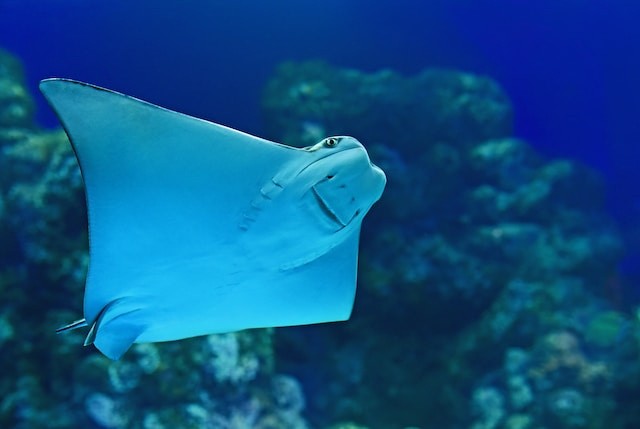The whitespotted eagle ray (Aetobatus narinari) is a globally endangered species that can crunch on anything with its mighty jaws and plate-like teeth.
However, little is known about its diet in the U.S. coastal waters, where it is protected by law.
A new study by researchers at Florida Atlantic University and Mote Marine Laboratory & Aquarium has used DNA barcoding to reveal the finer-scale feeding patterns of this species for the first time.
The study has important implications for both shellfish enhancement activities and species management.
DNA Barcoding: A Powerful Tool for Identifying Prey

DNA barcoding is a technique that uses small regions of the genome to rapidly identify species. It is especially useful for studying the diet of shell-crushing predators like the whitespotted eagle ray, which tend to winnow away the shells of their mollusk prey during feeding, leaving behind a conglomeration of mushy tissues that are hard to visually identify, as per Phys.org.
By extracting DNA from the gut contents of the rays and comparing it to a reference database of mollusk species, the researchers were able to determine what the rays had eaten.
This method also allowed them to quantify the relative proportions of different prey items in the diet.
A Broad and Variable Diet Across Florida
The study, published in the journal Fishes, analyzed the gut contents of 34 whitespotted eagle rays collected from three regions in Florida: Indian River Lagoon, Sarasota Bay and Florida Keys.
The results showed that the rays had a significantly broader diet than previously described, consuming at least 19 different mollusk species from 10 families.
The most common prey items were cockles (Cardiidae), wedge shells (Donacidae) and conchs (Strombidae).
The study also revealed that the diet of the rays varied by region, with different prey items dominating in different locations.
As an illustration, wedge shells and cockles were more common in Sarasota Bay and the Florida Keys, respectively, and Indian River Lagoon.
The researchers also found some evidence of seasonal variation in the diet, with more conchs consumed in winter than in summer.
Implications for Shellfish Enhancement and Species Management
The study did not find any evidence that the whitespotted eagle rays consumed commercially or recreationally important bivalves like hard clams, oysters, or scallops, contrary to anecdotal reports from hard clam farmers in Indian River Lagoon, as per ScienceDaily.
The study did discover that some of the rays consumed predatory conchs, which are known to kill significant bivalves.
This finding suggested that the rays play a dual role in the food chain because they can both directly feed on bivalves and manage their predators.
This has implications for both shellfish enhancement activities and species management, as it highlights the need to consider the ecological interactions between the rays and their prey when designing conservation strategies.
Increasing conch numbers, for instance, might lead to an increase in bivalve populations, which might then draw more rays.
The study concluded that DNA barcoding is a powerful tool for uncovering the dietary preferences of shell-crushing predators like the whitespotted eagle ray, which can help to better understand their ecological role and conservation status.
© 2025 NatureWorldNews.com All rights reserved. Do not reproduce without permission.





